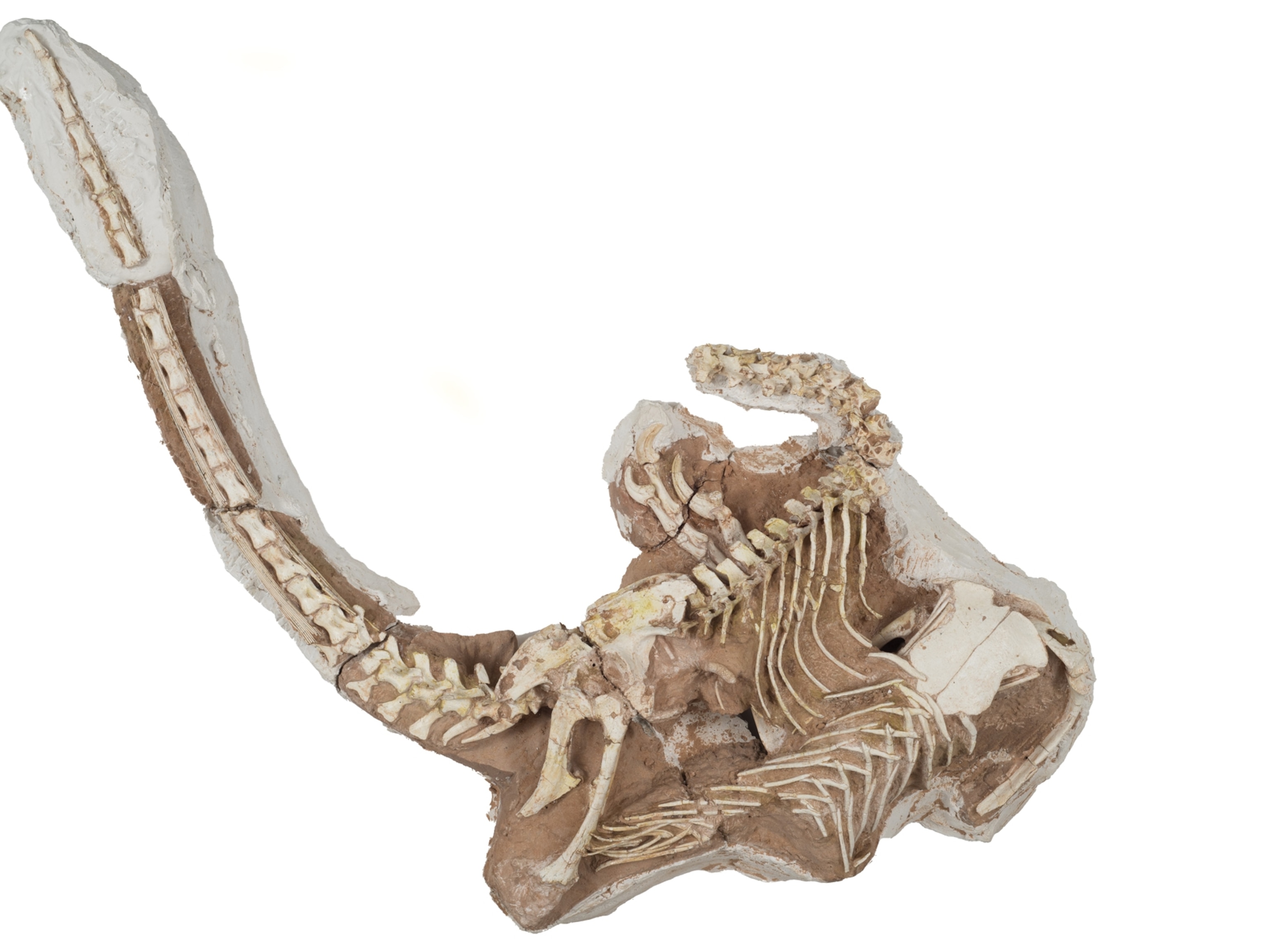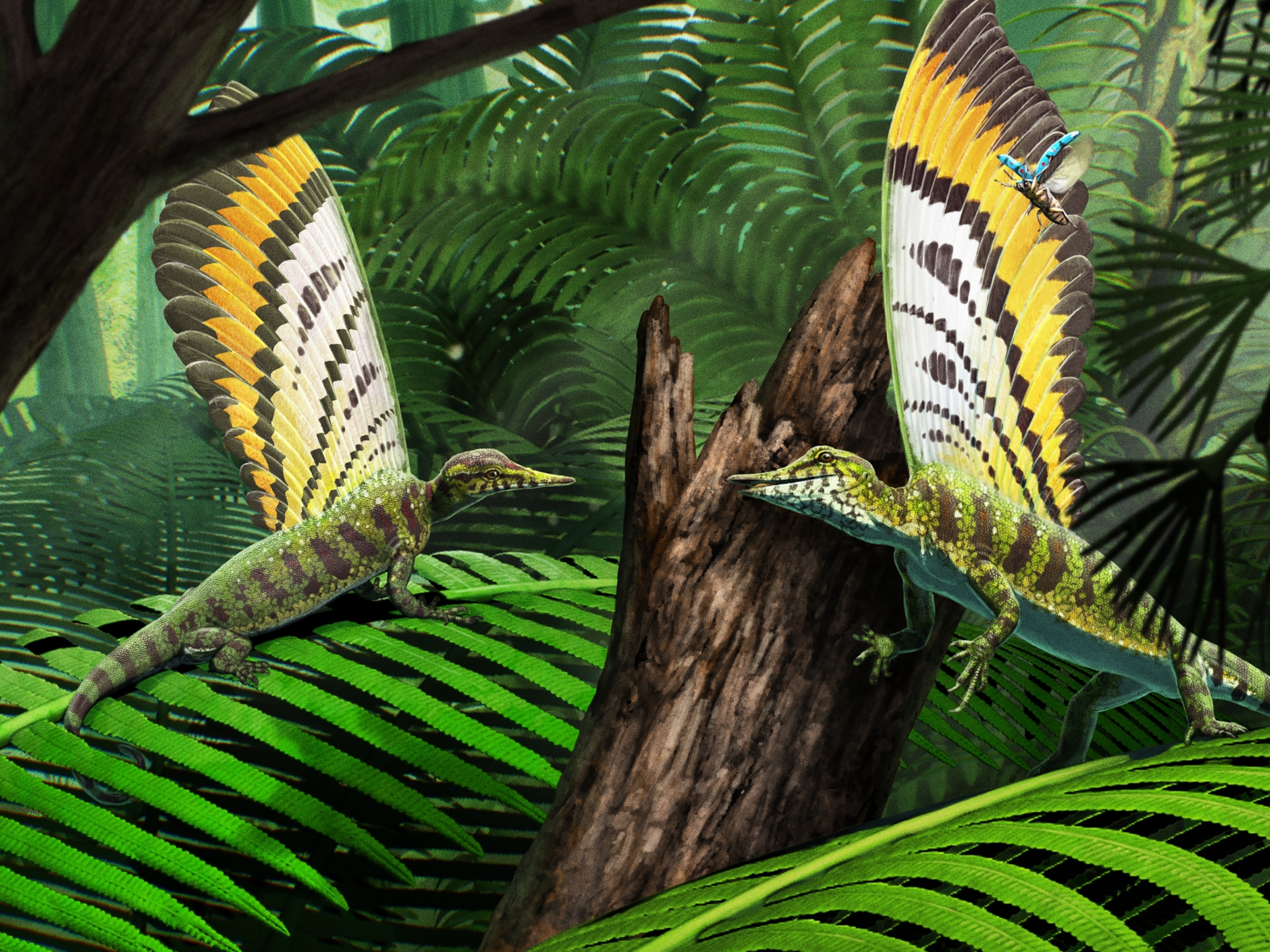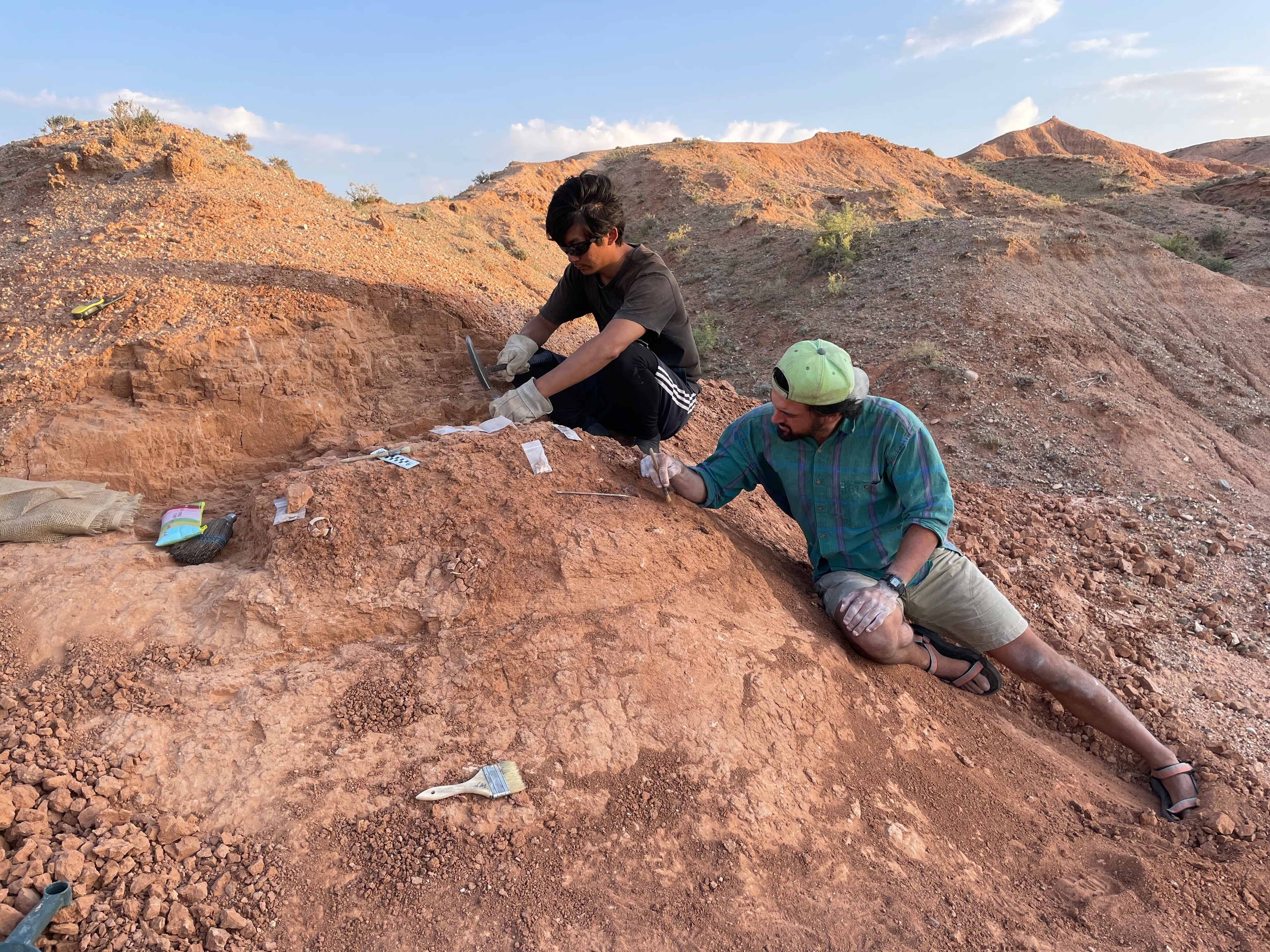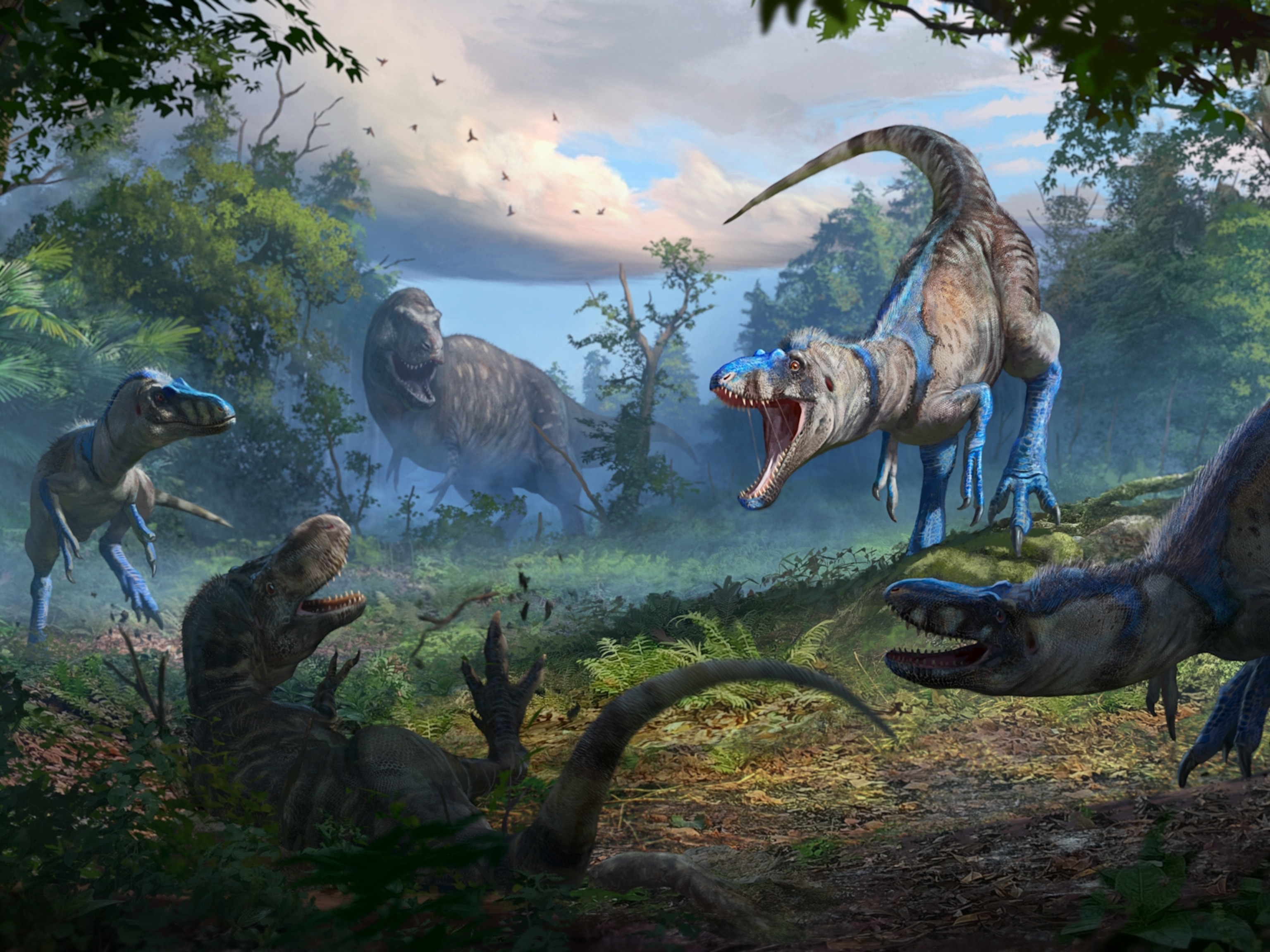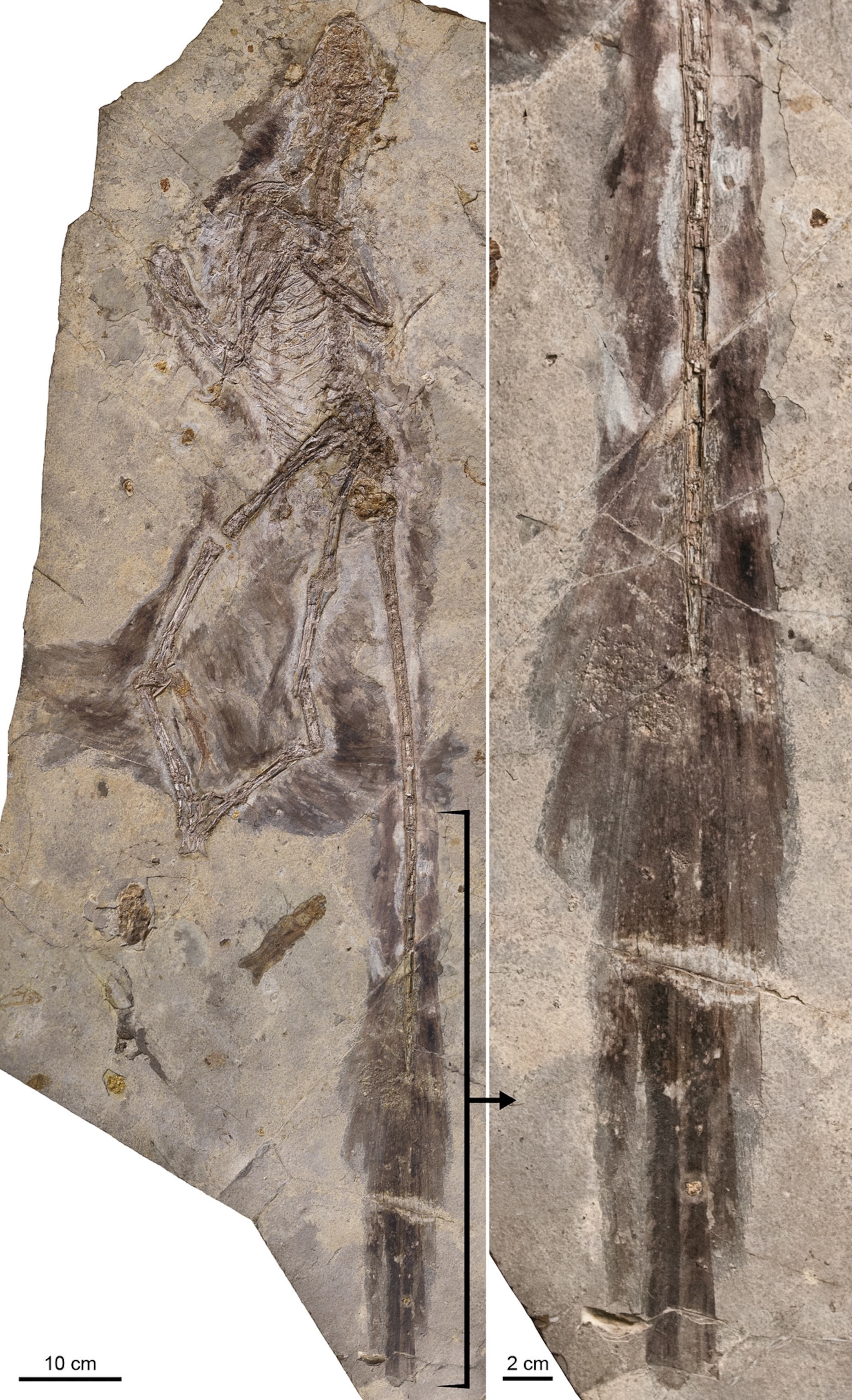
Long Tail Feathers Adorned Four-Winged Dinosaur
A raptor dinosaur from China sported four wings and a long tail, researchers report.
In the process of adapting to flight, feathered dinosaurs also evolved a way to land safely, suggests a 125-million-year-old four-winged flier from China. A surprisingly long feathered tail on the ancient creature, scientists reported on Tuesday, served as a landing brake.
Discovery of the feathered dinosaur, dubbed Changyuraptor yangi ("great feather" in Chinese), adds to the roster of feathered raptor dinosaurs with hind wings found in northeastern China in the past two decades. It is the biggest one found so far, and the fifth such species. (Related: "Dinosaur-Era Fossil Shows Birds' Feathers Evolved Before Flight.")
The finds add to our understanding of how dinosaurs evolved to take advantage of feathers in the era of the earliest birds. Weighing about nine pounds (four kilograms) and measuring four feet (1.2 meters) long, Changyuraptor (JHONG-YU-rapp-tor) likely swooped down on early birds and mammals, researchers report in the journal Nature Communications.
"An animal that size that came down flying has to slow down or else crash," says study co-author Luis Chiappe of the Natural History Museum of Los Angeles County. "They could adjust the tail to change their pitch as they landed."
Fabled Fossils
The fossil was originally collected by farmers in China's Liaoning Province, famous for its preservation of dinosaur, insect, and early mammal remains from more than a hundred million years ago. Its most striking feature is the imprint of long feathers that once covered the bird. The dinosaur's tail feathers were a foot long, one-fourth the size of the creature overall. Proportionally, that is far longer than tail feathers on modern birds, Chiappe says.
By highlighting the extremes of early feathered dinosaur anatomy, Changyuraptor helps scholars better understand the origin and early evolution of flight in dinosaurs, says ancient feather expert Ashley Heers of the University of London. An aerodynamic analysis in the study shows that Changyuraptor should have been able to brake in flight by altering the pitch of the tail as it plummeted earthward.
The ability to control airborne trajectories determines the success of flying predators today, Heers notes by email, "and likely played an important role during the origins of flight as well."
Before the piece was purchased for study by Chinese researchers at Bohai University, in Jinzhou, someone had attempted to artificially reconstruct the neck of the almost complete fossil. "None of the rest of the fossil has any alteration," Chiappe says.
Winged Victory
Changyuraptor likely swooped down upon small birds, fish, or early mammals living in the forests of the era. But whether the four-winged dinosaurs were true wing-flapping fliers or merely gliders remains an open question, Chiappe says. "I think they could fly myself," he says. (Related: "A Velociraptor Without Feathers Isn't a Velociraptor.")
Paleontologist Gareth Dyke of the United Kingdom's University of Southampton sees the creature as more of a glider. "Feathers had a lot more uses than flying, we know from lots of feathered dinosaurs."
Follow Dan Vergano on Twitter.

